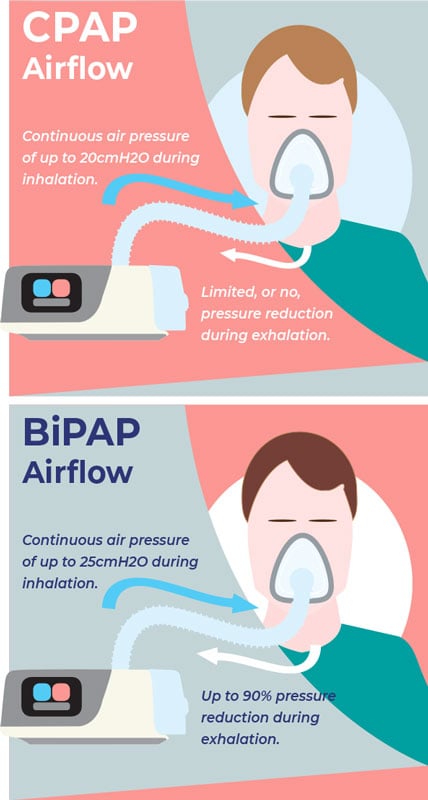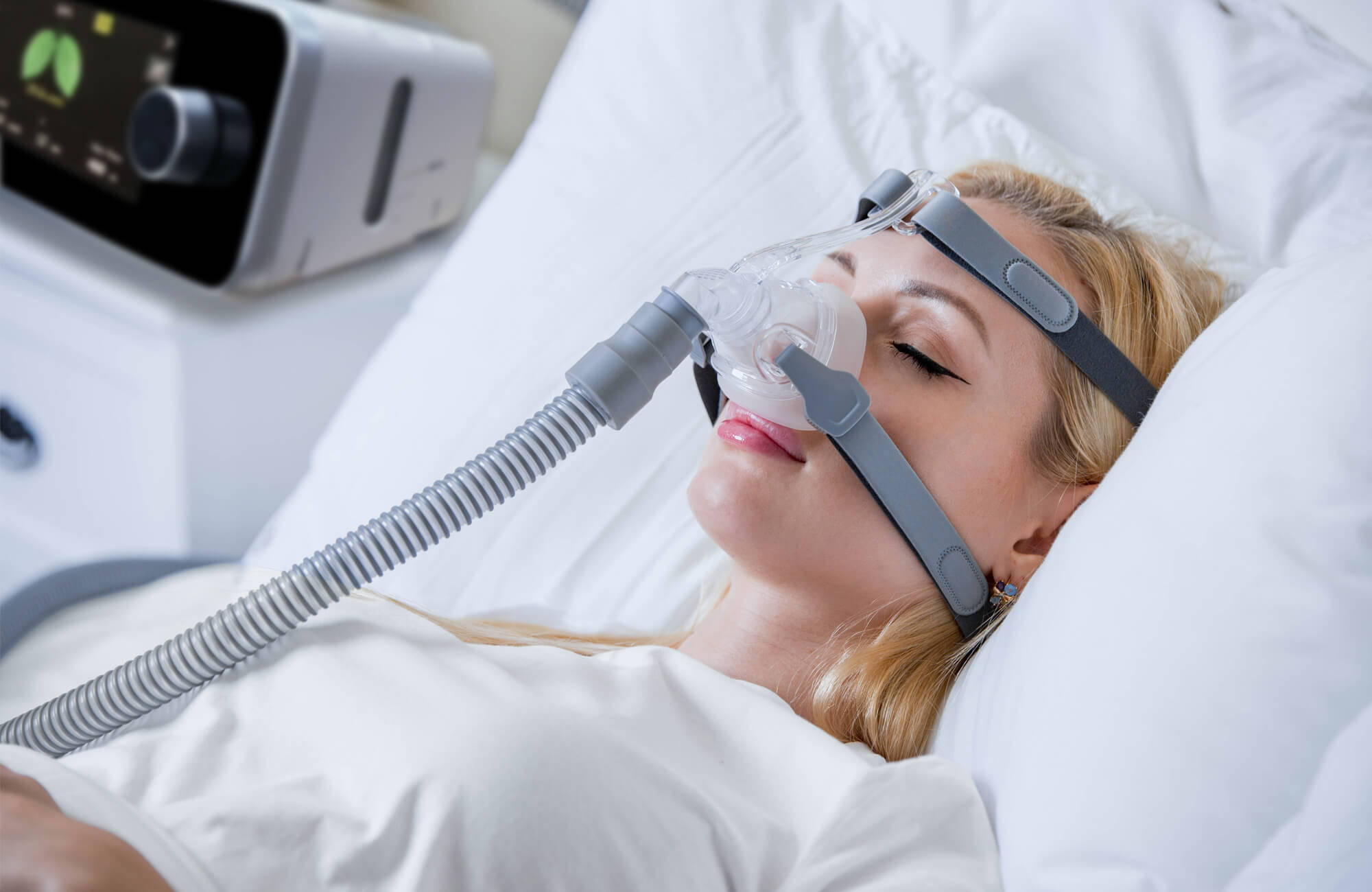Bipap vs. CPAP: Which Is the Ideal for Your Sleep Condition?
When browsing the complexities of rest conditions, the choice in between BiPAP and CPAP treatment is a crucial factor to consider. While CPAP gives a steady air movement suitable for obstructive rest apnea, BiPAP's dual pressure settings might enhance convenience for those with more detailed respiratory problems.
Understanding Rest Disorders
Rest conditions incorporate a variety of problems that interrupt regular sleep patterns, influencing both the quality and duration of remainder. These disorders can show up in various types, consisting of sleep problems, sleep apnea, narcolepsy, troubled leg syndrome, and parasomnias. Each problem offers distinct obstacles, typically bring about considerable daytime exhaustion, cognitive impairment, and emotional disturbances.
Sleep problems is characterized by problem dropping or remaining asleep, while sleep apnea includes duplicated disturbances in breathing during sleep, commonly leading to fragmented rest. Narcolepsy, on the other hand, is marked by too much daytime drowsiness and sudden sleep assaults. Troubled leg disorder causes unpleasant experiences in the legs, prompting an irrepressible desire to relocate them, which can additionally hinder the capability to drop off to sleep.
The impact of sleep problems extends past private wellness, affecting total performance, relationships, and high quality of life. Comprehending the certain nature of each condition is critical for reliable medical diagnosis and therapy. As rest wellness ends up being significantly identified as an essential part of general wellness, resolving these problems is necessary for boosting both rest high quality and daily functioning.
How CPAP Works
Continuous Favorable Respiratory Tract Stress (CPAP) treatment is regularly used as a key treatment for obstructive sleep apnea (OSA) The mechanism of CPAP involves the usage of an equipment that supplies a steady stream of air through a mask worn during sleep. This air flow preserves favorable stress in the air passage, stopping the collapse or obstruction of the throat that can occur during rest.
When a patient takes in, the CPAP maker offers a continuous circulation of air, making certain that the respiratory tract remains open - BiPAP Rental. This not just alleviates the signs and symptoms of OSA, such as snoring and disrupted sleep patterns, however also lowers the involved health risks, including cardio difficulties and daytime tiredness
The stress settings on a CPAP equipment can be customized to satisfy specific patient requirements, often identified via a sleep research study. On the whole, CPAP treatment has been revealed to dramatically improve the high quality of rest and overall health for people enduring from obstructive sleep apnea.
Exactly How BiPAP Functions
BiPAP, or Bilevel Positive Air Passage Stress, is a specific kind of non-invasive air flow that is particularly valuable for patients with problems such as intricate rest apnea or respiratory conditions. Unlike CPAP, which supplies a continuous stream of air at a single pressure, BiPAP provides two distinct pressure settings: a greater inspiratory stress for inhalation and a reduced expiratory stress for exhalation. This dual-pressure technique permits for easier breathing, reducing the effort called for throughout exhalation.
The tool runs with a mask fitted over the nose or mouth, connected to a device that generates atmospheric pressure. When the person breathes in, the maker provides the higher stress to help with air flow, guaranteeing that the airway remains open. Upon exhalation, the equipment instantly lowers the pressure, making it more comfy for that site the individual to breathe out.

Key Differences Between BiPAP and CPAP

On the other hand, BiPAP (Bilevel Favorable Air passage Stress) supplies two different stress setups: one for inhalation and a lower one for exhalation. This twin stress system permits more comfy breathing, specifically for patients who have problem with breathing out versus a constant pressure. Recommended Site BiPAP is often suggested for individuals with intricate sleep apnea, chronic obstructive pulmonary illness (COPD), or those who need added assistance throughout rest.
Furthermore, the complexity of BiPAP gadgets commonly causes a higher cost and requires more careful titration than CPAP. BiPAP Rental. Understanding these key differences can aid in recognizing which device may be preferable for particular sleep conditions, establishing the foundation for enlightened treatment choices
Picking the Right Treatment
Just how can one establish one of the most ideal treatment for taking care of rest conditions? The decision between BiPAP and CPAP therapy primarily pivots on the specific characteristics of the rest problem, the individual's total wellness, and their convenience with the tool. CPAP, which supplies a continual stream of air, is generally recommended for obstructive sleep apnea (OSA) It maintains an open respiratory tract throughout sleep, efficiently avoiding apneas and hypopneas.
On the other hand, BiPAP provides 2 levels of stress: one for inhalation and a reduced one for exhalation. This double pressure system is beneficial for people with complicated sleep apnea or those that experience difficulty breathing out against a continual pressure. In addition, BiPAP is typically recommended for people with breathing problems, such as chronic obstructive lung disease (COPD), where differing pressure settings can improve convenience and compliance.
Inevitably, a thorough assessment by a rest specialist, consisting of a sleep research study, can aid identify which treatment aligns finest with the person's needs. Aspects such as comfort, simplicity of usage, and particular clinical problems should likewise be taken into account to enhance therapy outcomes.
Verdict
In recap, both BiPAP and CPAP offer distinct purposes in the administration of rest problems. CPAP works for obstructive sleep apnea with constant air movement, while BiPAP offers double stress setups that boost comfort for those with complex sleep apnea or breathing concerns. The selection between these therapies ought to be directed by individual requirements and conditions, requiring a thorough assessment by a sleep professional to make certain optimum treatment results and boosted quality of sleep.

On the whole, CPAP therapy has actually been revealed to considerably boost the quality of sleep and general wellness for people suffering from obstructive sleep apnea.
BiPAP is commonly advised for patients with complicated rest apnea, persistent obstructive lung condition (COPD), or those that require additional support during rest.
CPAP is efficient for obstructive rest apnea via consistent airflow, while BiPAP provides double stress setups that boost convenience for those with intricate rest apnea or respiratory concerns.
Comments on “Essential Tips for Choosing a BiPAP Rental Solution”